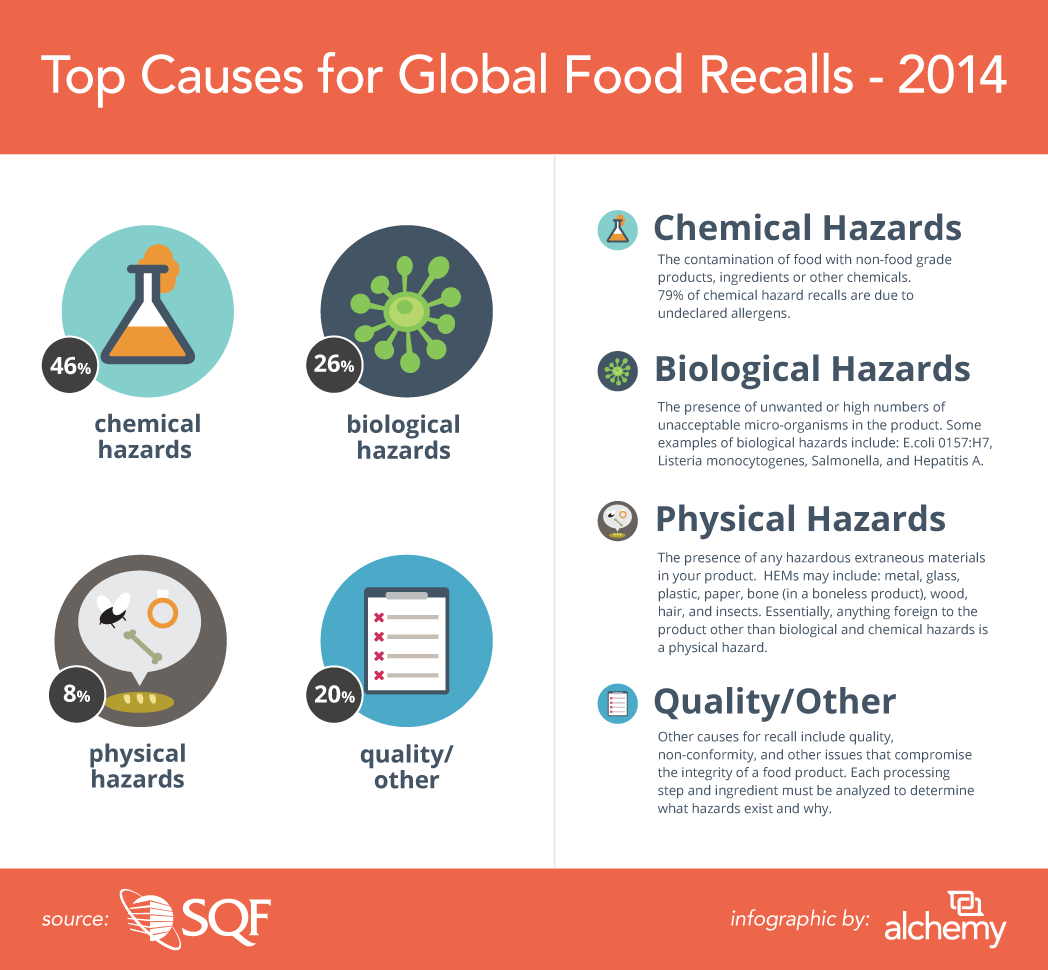[Infographic] Managing the Risk of Food Recall to Keep Retailers Happy

There are many ways that suppliers can make retailers happy: healthy options, affordable products, sustainable sourcing, and reduced waste are only a few. What about simpler recalls? Or better yet, fewer or no recalls at all? No one, least of all you, wants a product recall to occur, however they do happen. And while recalls are certainly not easy for anyone involved, how can you make them easier on your retailer?
Let’s take a step back to first understand what causes product to be pulled from store shelves. Based on data collected by SQFI, there were 2,155 global recalls reported in 2014.
Based on the recall causes above, focus on four areas to achieve maxium impact.
1. Mitigate Allergen Recall Risks
As demonstrated by the stats, undeclared allergens and mislabeling put you at the greatest risk for costly recalls. For suppliers dealing with allergens, the allergen management program requires the most attention in the storage, staging, and flow of allergens within the facility as well as the proper labeling of product.
Take care to review existing procedures to ensure that the allergen labeling on the ingredient is transferred to the finished product. Additionally, review training and documentation that ensures label verification for each lot received. Be sure that there are multiple reviews and sign offs for labeling, that labels are properly stored, and that there is a review of finished product to make sure the label matches.
2. Evaluate Your Approved Supplier Program
Of course, one way to curb product recalls is to prevent contaminated ingredients from being added to your product. Take a fresh look at your approved supplier program to ensure all materials and services that impact product safety and quality are included.
Implement a risk rating systems for your suppliers and include methods for compliance. Check these against the agreed-upon specifications and be sure to clearly identify what is to be done when non-compliance is identified. Review and modify the system to ensure control is maintained and corrective actions are put into place.
{{cta(‘7fd09bdc-35cf-4b6e-abd1-babdc623d910’)}}
3. Perform Trace Back Analysis
A true test of your programs, processes and procedures is to conduct your own trace back analysis. Take a product and trace it back through your system, making sure you target all systems. Include staff training, sanitation systems, sign offs, product storage, training and review of service suppliers, rework process and records, calibration records, etc. for the product lot chosen.
4. Assess Your Recall Management Program
Lastly, verify that your recall management program is doing all that it should to remove product from store shelves. Be certain your communications to the store are clear regarding the product that is to be removed with detailed instructions on how the product is identified. Check with your retailer to know what elements of your program are to be communicated back to them, and who should receive the information.
Final thoughts:
Take a new look at existing systems, it could make a huge impact on product safety and quality. This approach may ultimately lead to fewer, easier recalls and hopefully a happier retailer.





